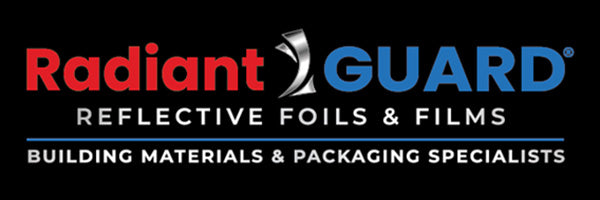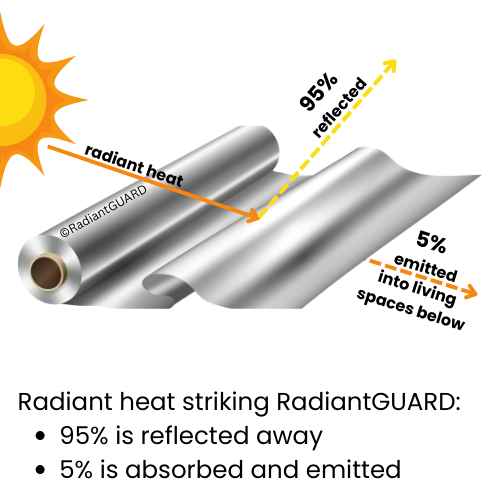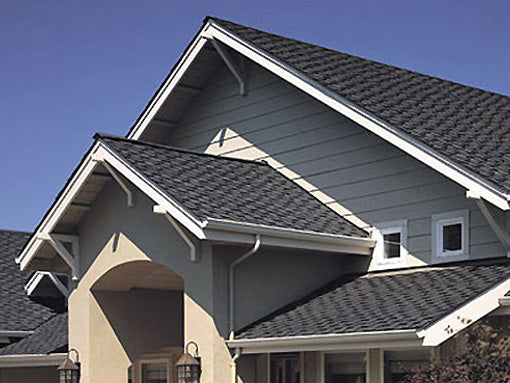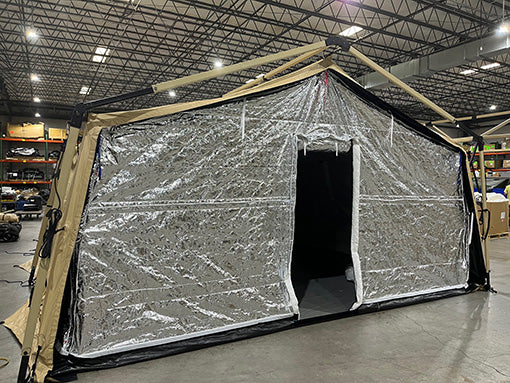We're often asked "What is the r-value of your Xtreme radiant barrier?" The answer is simply zero because radiant barrier doesn't work like an R-Value rated product.
What Is An R-Value?

Simple put, an R-value is the measurement of an insulating or building material's ability to resist the transfer of heat through itself. As an R-value material's thickness increases, so does the R-value which means, the material's resistance to heat transfer is better. So, in essence, a product with a higher the R-value is better than a similar productwith a lower R-value.
Once an R-value rated insulation reaches its absorption capacity, the insulation then starts to transmit heat from itself directly into those same areas you where you were trying to control heat.
Radiant Barrier and R-Values
A radiant barrier doesn't have an R-value because it doesn't absorb heat like an R-value rated insulation. Instead, a radiant barrier BLOCKS the transfer of radiant heat by reflecting the heat that comes in contact with it across an air space AND by reducing the amount of radiant heat it transmits from itself across an air space.
Because 90% of the heat gain in an attic space is attributed to radiant heat, installing a radiant barrier to the underside of the roof rafters or on the attic floor will dramaticallyreduce the amount of heat flow from your attic space into your livings spaces. That means your air conditioning until will run less often, which extends its life expectancy, and your electric bills will be lower.
Visit RadiantGUARD.com for more information on how a radiant barrier IMPROVES the effectiveness of your existing R-value rated insulation in your attic or contact us today toll free (866) 528-8412 for technical advice or to place an order for radiant barrier for your project.




 Buy and install our radiant barrier today before it gets too hot in your attic and start enjoying a more comfortable home and lower electric bills.
Buy and install our radiant barrier today before it gets too hot in your attic and start enjoying a more comfortable home and lower electric bills.

